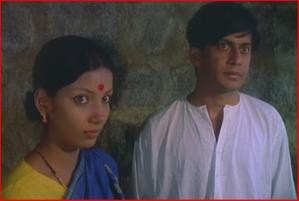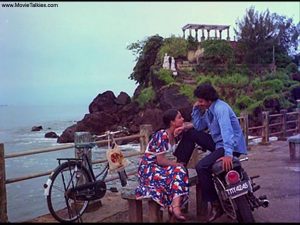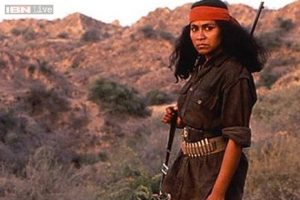Will the Indian caste system ever end?
Sairat – which means ‘wild’ is one of the super duper hits in 2016. The Marathi film produced by filmmaker Nagraj Manjule has created a stir at the box office and all over the country even in other states than Maharashtra. The film has team of all new actors: the hero-heroine are two unknown faces. The movie has a typical love story based against the backdrop of caste system. Manjule tells a tragic actual love story in today’s fast age. He refuses to surrender to the conventional parameters of filmmaking as even as the film rolls out a strange, shocking climax. The film’s success seems to signify that the audience has begun preferring movies that crack the stereotypes rather than watch a film that refuses to respect their sensibilities.
Caste System is one of the major curses India faces and that has a big hand in paralyzing the growth of the nation in terms of both economic and social. However, the film industry plays a big role in creating awareness against it. Thanks to Bollywood, it has time and again played a big role in showcasing the caste system, its values and ethos. Media too plays a big role in eliminating the evil practices. After 66 years of independence it plays a big role in votebank: vote bank is a loyal bloc of voters from a single community, who consistently back a certain candidates or political formation in democratic elections. Such behaviour is often the result of an expectation of real or imagined benefits from the political formations, often at the cost of other communities. Bollywood and other regional films are against this social evil since years, and a glimpse of this can be seen in Hindi films fighting this evil over the years. Let’s look at some of the best films against Caste System in India.
Achhut Kanya – 1936: Pratap (Ashok Kumar) and Kasturi (Devika Rani) are childhood friends, deeply in love with each other. Unfortunately, Pratap is a Brahmin and Kasturi an untouchable (achhut). The movie shows the scotching realities about the Dalit girls how they were treated inhumanly. The movie was quite bold: it shows that both hero and heroine though get married to different people – Pratap gets married to Meera (Manorama), while Kasturi marries Manu (Anwar). Both of them are unable to forget their first love, they struggle to make their respective marriages work.
This movie was considered as “reformist” by many critics. This movie is one of the earliest examples of unhappy love stories filmed in Bollywood between lovers coming from different castes and social positions of the society. In 1936 the Indian society was steeped into the Caste System and Gender Inequalities, this film, focused on a girl as the protagonist of the story. It was indeed a bold venture and worth its praises even today!
Sujata – 1959: This movie showcased romance between a Brahmin boy (Sunil Dutt)) and an untouchable girl Sujata (Nutan). The movie criticized the practice of untouchability in India.
Brahmin couple Upen and Charu bring up the orphaned Sujata. Although Upen is fond of the adoptive child, his wife Charu can never fully embrace Sujata because she is an untouchable. They keep reminding Sujata that she is a Dalit girl. Upen’s wife falls down the stairs and is rushed to the hospital. The doctors tell the family that in order to save Charu, they need blood of a rare group. Only Sujata’s blood matches, and she willingly donates blood. When Upen’s wife knows that her life was saved by Sujata, she realizes her mistakes and accepts her as her daughter. This movie ends on a positive note; as Sujata and Adheer (Nutan and Sunit Dutt) get married.
Sujata was directed by the great director Bimal Roy whose expertise lied in portraying the innate essence of Indian Society onscreen. It showed the deep rooted caste system in the Indian society and its caste-based value judgment in the garb of a love story between two people of different social castes.
Ankur – 1974: is the story of Surya (Anant Nag), a young college graduate who is sent by his wealthy and landowner father to manage a village farm. His young wife is to join him after several months when she comes of age. Surya, is shown as a man who does not believe in the caste system and is drawn toward his attractive maid-servant (Shabana Azmi), wife of a low caste, drunken, deaf-mute farm hand. The deaf-mute is driven out of the village in punishment for a pilfering incident. In his absence, Surya takes the beautiful maid to bed, and she conceives. When his young wife arrives in the village, Surya rejects the maid and her unborn child.
Shyam Benegal criticizes the caste system and exposes the hypocrisies of the ruling class with subtlety without any loudness. Ankur is a powerful, emotionally complex work, beautifully filmed and stunningly acted. The movie depicts a lot of caste based social rituals in rural India in the seventies. The lead actress playing the role of an exposed Dalit girl, the drama takes on a whole new level.
Ek duje ke liye – 1981: Directed by K.Balachander, the movie is about the love between a Tamil man, Vasu (Kamal Hasan), and a North Indian woman, Sapna (Rati Agnihotri) who fall in love. They come from totally different backgrounds and can hardly speak the other’s language. Their parents despise each other and they have regular skirmishes. When Vasu and Sapna admit their love, there is chaos in their homes, and their parents reject the idea; their parents reject the idea of both getting married stating the caste difference. The movie showcases hatred prevailing in society against other caste; this movie shows difference between veg and non-veg eaters.
As a ploy to separate the lovers, their parents impose a condition that Vasu and Sapna should stay away from each other for a year. After such a period, if they still want to be together, they can get married. During the year there should be no contact between them whatsoever. Vasu and Sapna reluctantly agree to the condition and decide to separate.
A lot of drama happens in the one year’s time, and the movie ends tragically when Vasu and Sapna commit suicide by jumping off a cliff.
Bandit Queen – 1994: Shekhar Kapoor’s Phoolan is married to a twenty-something fellow called Puttilal, she is a young girl. Child marriages were customary during that time, Phoolan’s mother Moola objects to the timing of the match. Phoolan’s aging father conforming to his culture, regrettably disagrees, and Phoolan is sent off with Puttilal.
Phoolan faces to some sexual and exploitative abuses, which are part and parcel of the lower caste system. Puttilal is physically and sexually abusive, and Phoolan eventually runs away and returns home. As Phoolan grows older she faces incidents of (non-consensual) fondling and groping from the Thakur men. At the next town meeting, the panchayat wield their patriarchal authority to banish Phoolan from the village, since she will not consent to the sexual advances of the higher caste males, who treat her like lesser human. The film focuses highlights all the trauma and injustice that women of lower castes (specifically, in rural India) have to face every single day in the hands of the Thakurs, or the feudal lords. Although it’s isn’t a documentary, the film blatantly puts forth all the caste-related issues of India, without trying to reform the society or be preachy.
Conclusion: The caste system will continue in this nation for many political and administrative reasons. The caste prejudice thrives in an extensive social environment even today. The biggest hindrance we face in ending this system is marriages. Even today, a big percentage of marriages still happen based on caste. Unless caste is removed from such a fundamental institution, we are never going to be able to end this. The movie ‘Sairat’ ends leaving the audience stunned and shocked. People leave the cinema hall with heavy hearts and lost in deep thoughts about that last scene. Most of the viewers say “when will the caste system end in India?”

















































